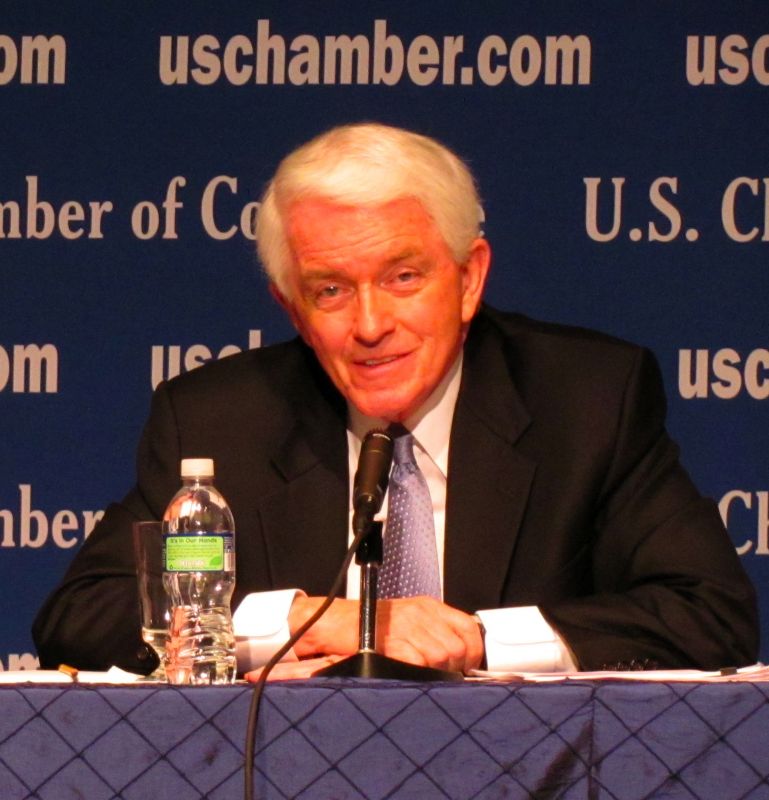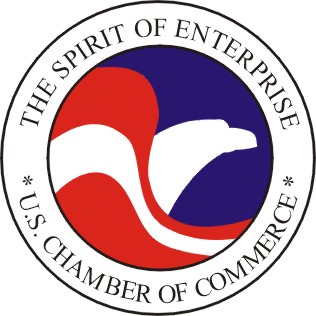The Supreme Court’s decision striking down limits on corporate election advertising is, as I noted yesterday, a big win for the US Chamber of Commerce, which already has a war chest to influence the 2010 election. Today, National Journal‘s Peter Stone gives us an inside look at the woman responsible for building their substantial monetary arsenal: Agnes Warfield.
Warfield has been the Chamber’s senior vice president of finance and development for nearly a decade, and in the past few years has brought in an average of $200 million to support the group’s lobbying, electoral, and legal work. She’s by all accounts a force to be reckoned with, bringing in potential funders to meet with president Tom Donohue, who seals the deal with new donors. She helps Donohue plan lavish dinners where Chamber board members and major donors can cavort with political bigwigs; guests during the Bush years included Karl Rove, Chief of Staff Andy Card, and Commerce Secretary Donald Evans.
Those who know Warfield’s work give her high marks as a money magician. She is adept at tapping the business lobby group’s large team of outside advisers, a number of whom are also lobbyists. Warfield occasionally attends internal policy dinners held for chamber consultants. “She says, ‘Help reach into your client base and help us raise money,’ ” said GOP lobbyist Scott Reed, who is a chamber consultant.
Warfield also takes good care of the chamber’s big sugar daddies. “When there’s a donor who wants to know about X, Y, or Z, she gets it done,” Reed said. “She cracks the whip. Donors like to know what’s going on in Washington.”
Warfield’s heading up the group’s $100 million lobbying and political advocacy effort, the Campaign for Free Enterprise. And as Robert Kelner, a GOP election lawyer at Covington & Burling, told the Hotline, yesterday’s decision will likely increase the amount of money coming through groups like the Chamber, an idea other campaign-finance experts echoed.
“If people think that individual companies are going to go out and buy ads, there may be some of that, but for the most part companies are going to flow this money through trade groups and other outside groups,” said Kelner. “This will open the floodgates for money flowing through groups like the U.S. Chamber of Commerce and other associations [that] spend money on political advertising.”
I’m guessing Warfield will be a busy woman in the coming months.














